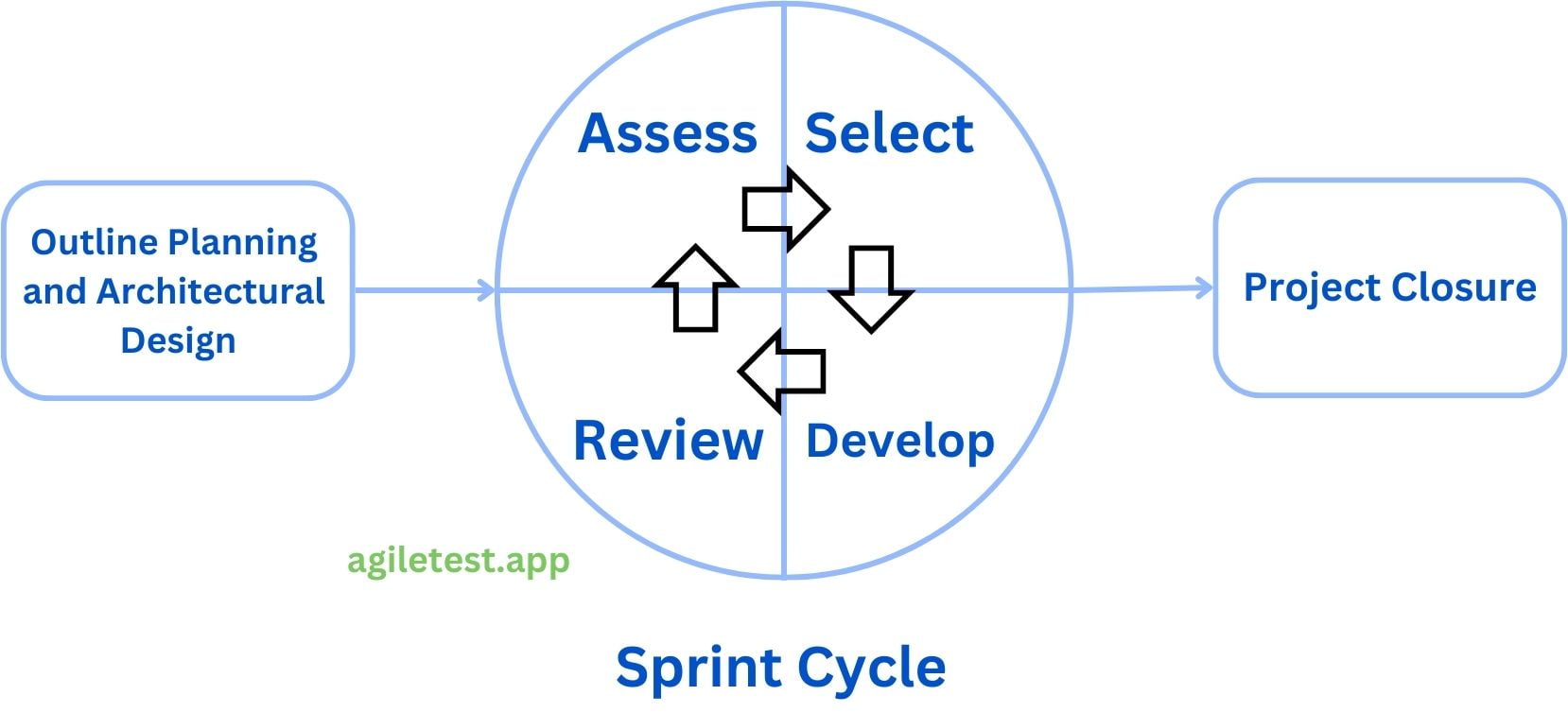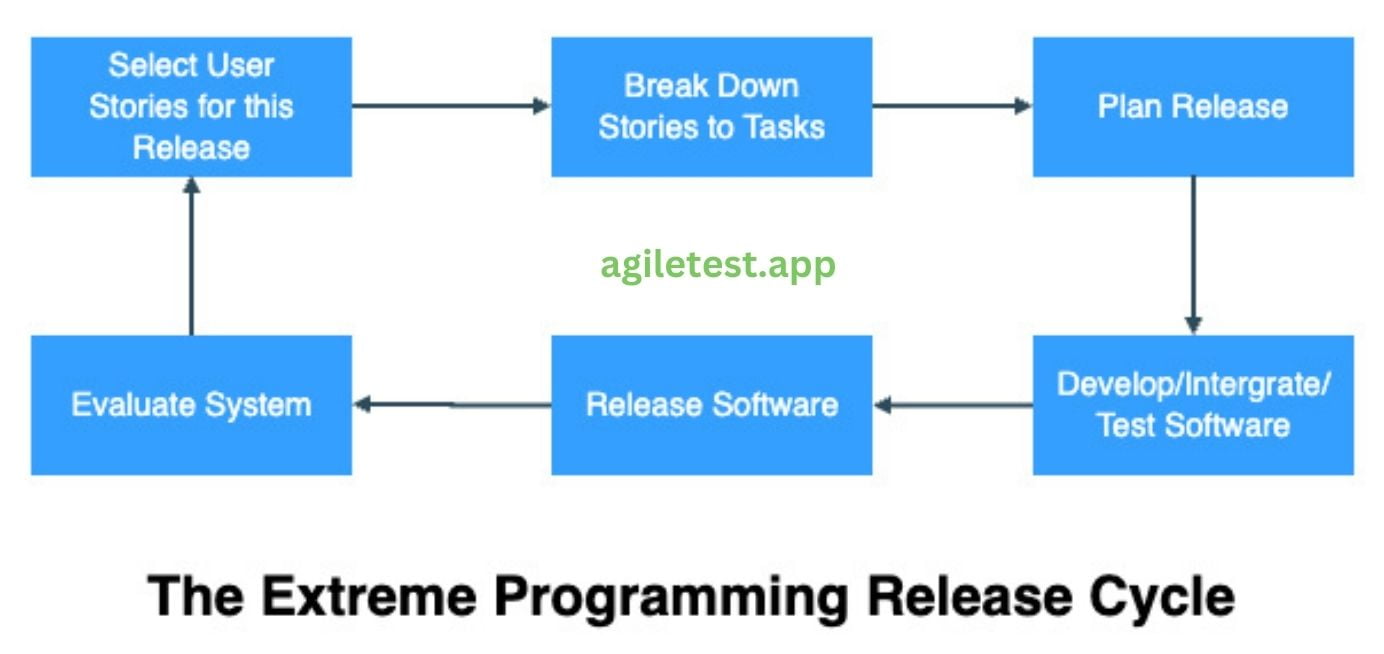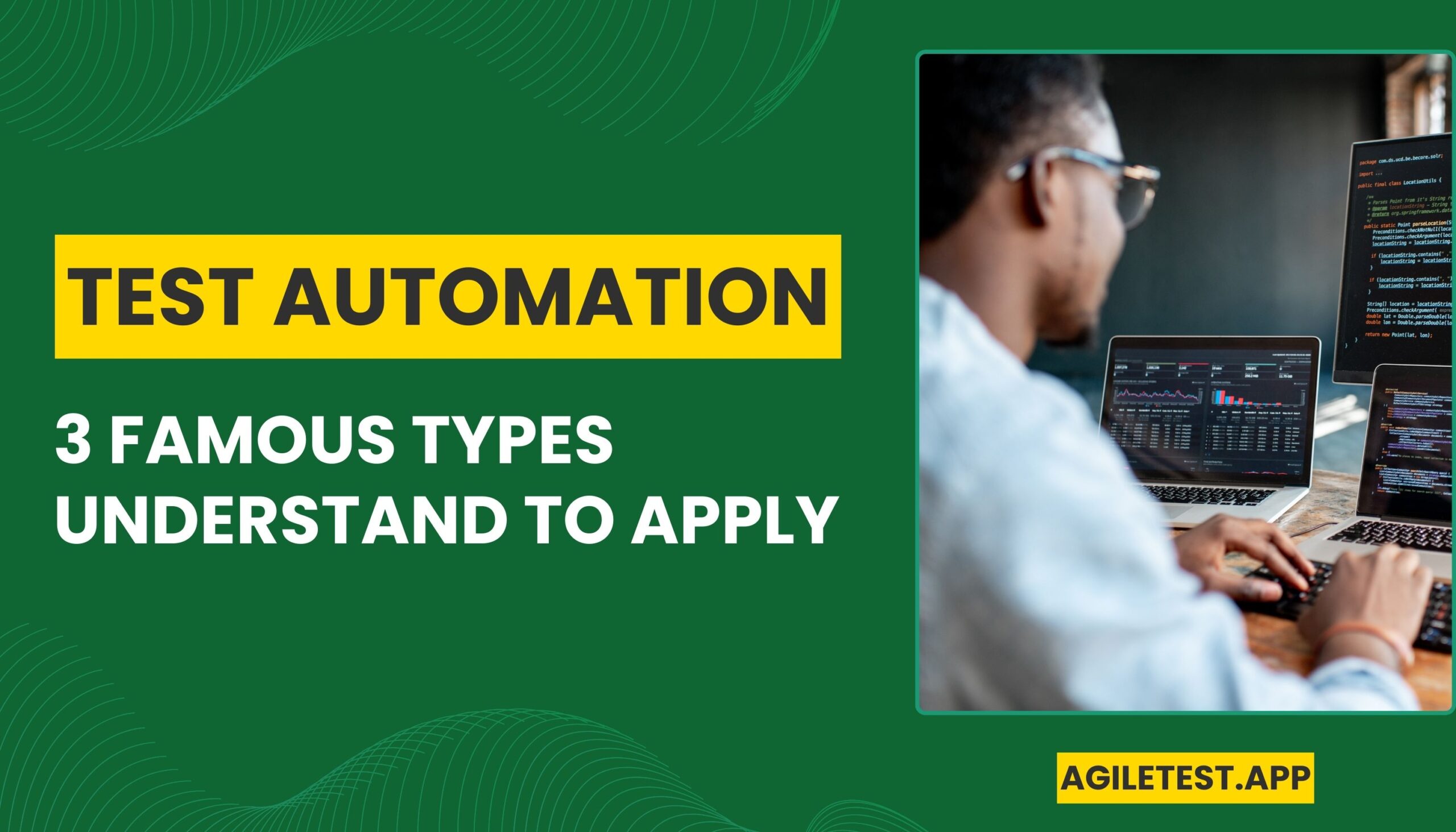In this article, you will find a detailed synopsis of agile methodologies. To elaborate, agile software development encompasses a diverse array of methodologies. Rather than representing a singular framework, agile development does branch out to Scrum, Kanban, Extreme Programming (XP), and Agile Testing. Each methodology within the Agile software development umbrella actively seeks to increase flexibility and improve customer satisfaction. Concurrently, they enhance the overall quality of delivered products or services, effectively adapting to the unique needs and environments of various projects.
Types of Agile Methodologies
- Scrum
- Kanban
- Extreme Programming (XP)
- Agile Testing
What is Scrum? An Adaptable Agile Methodology
Scrum is a versatile Agile methodology, primarily focusing on managing and controlling iterative development. Unlike other methodologies, Scrum does not dictate the usage of specific programming practices like pair programming and test-first development. Instead, it lays out a flexible framework, emphasizing managing development iterations, making it compatible with other technical Agile approaches such as Extreme Programming.
Scrum Process Model

The Scrum model structure divides into three distinct phases. The process initiates with the outline planning phase, where the general objectives for the project establishes, and the software architecture is designed. This phase is crucial for setting clear goals and building a robust foundation for the project.
Following the planning phase are the sprint cycles, each aimed at developing an increment of the system. These cycles are integral for continuous development and improvement, allowing for regular assessment and refinement of the project objectives and outcomes.
The final phase, project closure, concludes the project by completing the required documentation, such as system help frames and user manuals, and evaluating the lessons learned from the project. This reflective phase is essential for continuous learning and improvement, providing insights that can be applied to future projects.
Pros and Cons of Scrum
Scrum brings forth a clear structure and defined roles, emphasizing iterative development and feedback, and offering flexibility and adaptability to changing requirements. These elements make Scrum a widely adopted Agile framework, known for fostering an environment conducive to continuous development and learning.
However, the implementation of Scrum can be intricate, necessitating effective communication and a shift from traditional practices. The framework’s flexibility, while being one of its strengths, mandates meticulous scope management and prioritization to prevent the project scope from spiraling out of control.
Scrum in Software Management Project
Scrum’s structured yet flexible approach makes it a favored choice among Agile methodologies. Its emphasis on clear roles, iterative development, and adaptability provides a conducive environment for handling the dynamic nature of software development projects. However, the complexities in its implementation and the need for effective communication and scope management require a thoughtful approach to leverage its full potential. By understanding and addressing these challenges, teams can harness the power of Scrum to drive successful project outcomes.
Kanban System: A Visual Agile Methodology
What is Kanban?
Kanban stands as the second crucial Agile methodology in the domain of software development. This approach employs a visual board to illustrate the progression of work items across different phases of a process. The central objective of Kanban is to optimize and smoothen the flow of work, minimize waste, and elevate overall productivity. This methodology is paramount for enabling a systematic and visual approach to understanding and managing workflow and processes.
Pros and Cons of Kanban
Kanban is known for its flexibility, which allows for easy adaptation to changes and evolving priorities, making project management smooth in dynamic environments. Its visual elements promote transparency and provide a clear view of work status and progress, aiding informed decision-making. Moreover, by focusing on streamlining processes, Kanban minimizes waste and improves workflow, thereby enhancing overall productivity.
However, Kanban also has its challenges. It does not prescribe specific roles, so teams need to define their own, which can require additional effort to clarify responsibilities. Effective communication is crucial in Kanban to maintain alignment and prevent misunderstandings since its success heavily relies on constant, clear interactions among team members. Also, its flexibility can lead to limited predictability compared to more structured methodologies, necessitating careful planning and management to address uncertainties.
Kanban in Software Management Project
Kanban, with its visual and flexible approach, empowers teams to optimize workflow, reduce waste, and adapt to changes efficiently. While it demands clear communication, role definition, and careful management to navigate its challenges, the benefits it offers in improving transparency, adaptability, and productivity make it a valuable asset in the repertoire of Agile methodologies. By understanding and leveraging Kanban’s strengths and addressing its limitations, teams can create a more responsive and efficient development environment.
Extreme Programming: A Proactive Agile Methodology
What is Extreme Programming (XP)?
Extreme Programming (XP) is one of the most renowned and widely embraced Agile methodologies. Its notoriety and preference stem from the fact that it amplifies recognized best practices, such as iterative development, to ‘extreme’ levels, ensuring maximum efficiency and adaptability in the software development process.
Extreme Programming Process Model

The illustrations utilized in explaining Extreme Programming are developed using the Mocky App by the DevSamurai Team, via Mocky for Confluence and Mocky for Jira , providing visual clarity to this Agile methodology.
In Extreme Programming, requirements are articulated as user stories or scenarios, which are then translated directly into a series of tasks. This methodology mandates that programmers collaborate in pairs and devise tests for each task prior to initiating the coding process. Every test must run successfully each time new code is amalgamated into the system, ensuring consistent quality and functionality. Extreme Programming is characterized by short intervals between system releases and intimate customer involvement in specifying and prioritizing system requirements. Unlike traditional methodologies, the customer is an integral part of the development team, actively engaging in discussions and decision-making processes regarding the project’s scenarios and requirements.
Pros and Cons of Extreme Programming
Extreme Programming (XP) stands out for its emphasis on high code quality, aiming to minimize bugs and enhance software robustness. It actively promotes regular software releases and encourages customer involvement, which helps in ensuring that the developed software aligns well with user needs and expectations. Furthermore, XP fosters an environment of collaboration and knowledge sharing among team members, contributing to a conducive learning atmosphere and boosting overall team proficiency.
However, the transition to XP is not without its challenges. There’s a noticeable learning curve and it demands substantial resources to master its technical practices and to implement it effectively. Managing documentation and project scope in XP is also no small feat, requiring meticulous attention to detail and robust management practices. Additionally, the effectiveness of XP is closely tied to the availability of skilled personnel who align well with the organization’s culture and objectives, placing a premium on having the right human resources.
Extreme Programming in Software Management Project
Extreme Programming stands out in the Agile landscape for pushing recognized best practices to their limits, ensuring high-quality software development that is deeply attuned to user needs. While the challenges in adopting XP, such as the learning curve, resource intensity, and alignment with organizational culture, require careful consideration and planning, the benefits it offers in code quality, customer involvement, and collaboration make it a valuable methodology in Agile software development. By understanding and leveraging the strengths of Extreme Programming while addressing its limitations, software development teams can elevate their project outcomes and user satisfaction.
Defining Agile Testing: A Collaborative Approach to Quality Assurance
Testing in Agile
Agile Testing is distinct from other Agile methodologies such as Scrum, Kanban, and Extreme Programming, each of which has unique approaches and focuses within software development. While Agile Testing shares common principles with these methodologies, it stands apart due to its specialized focus on testing aspects of software development.
It is crucial to understand that Agile Testing is not a standalone methodology. Rather, it is an approach to software testing aligned with the principles of agile development, emphasizing collaborative testing, early and continuous testing throughout the development lifecycle, and adaptability to changing requirements.
Agile Testing Process Model

Agile Testing aims to integrate testers, developers, customers, and other stakeholders to ensure that testing activities are intertwined throughout the development process, guaranteeing optimal alignment between testing and development goals.
- Initial Phase: The process begins by gathering inputs from stakeholders and users, aiding test engineers in defining objectives for the ensuing lifecycle.
- Planning Phase: Subsequently, stakeholders convene to formulate the schedule of the testing process and outline the deliverables, establishing a clear roadmap for testing activities.
- Review Phase: Features undergo meticulous review to ascertain their readiness for deployment, ensuring that only well-vetted features make it to the live environment.
- Daily Scrum: This stage encompasses daily standup meetings where the team aligns on the status of testing and sets goals for the day, maintaining continuous alignment and progress.
- Agility Review Meeting: The final phase involves weekly meetings with stakeholders for a consistent evaluation and assessment of progress against goals, fostering continuous improvement.
Pros and Cons of Agile Testing
Agile Testing stands out due to its provision for continuous feedback, allowing improvements and refinements to be made in a timely manner. This methodology is notably adaptable, adjusting effectively to changing requirements and ensuring that there is continuous alignment with user needs and project objectives. Furthermore, Agile Testing promotes a culture of collaboration and shared responsibility, which ensures better synchronization between development and testing. This, in turn, results in the delivery of high-quality software, meeting the users’ needs more accurately.
However, Agile Testing does bring along its set of challenges. It often encounters time-related constraints, necessitating efficient management of resources and schedules to stay on track. There is also a significant emphasis on maintaining comprehensive documentation, which demands meticulous attention to detail and consistent efforts for regular upkeep. Additionally, maintaining the relevance and effectiveness of test automation scripts in Agile Testing requires continuous effort and attention, ensuring that they adapt to the evolving needs of the projects.
Agile Testing in Software Management Project
Agile Testing is a vital approach within agile methodologies, specializing in ensuring software quality through continuous, collaborative, and adaptive testing practices. While it offers substantial benefits in terms of continuous feedback, adaptability, and high-quality software delivery, it also poses challenges that require careful consideration and management. By understanding the principles, practices, and implications of Agile Testing, development teams can leverage its benefits to enhance software quality and user satisfaction effectively.
Adapt Agile Methodologies in Real-Life Projects
We want to introduce you to AgileTest App, a Test Management tool for Jira. AgileTest actively facilitates the integration of Agile methodologies within your project management workflows. The app empowers teams to manage and execute tests efficiently, synchronize development and testing activities, and adapt swiftly to changing requirements, all while maintaining a focus on delivering maximum value to the customers. Through the proficient use of AgileTest App , organizations can optimize their Agile processes, enhancing productivity and achieving their project goals effectively.
To sum up, the Agile Manifesto and its associated values and principles serve as a foundational guide for Agile methodologies like Scrum, Kanban, Extreme Programming, and Agile Testing. Each methodology, with its unique focus and approach, contributes to the overarching aim of Agile development—to deliver high-quality software that aligns with user needs and can quickly adapt to changes. By leveraging this application, QA teams can seamlessly align their testing strategies with Agile principles, ensuring continuous feedback, adaptability, and high-quality software delivery.
To learn more about Agile, check out this video!
For more information about agile testing, check out more videos from the AgileTest Academy series.
If you love the testing experiences, try our app on the Atlassian Marketplace!




